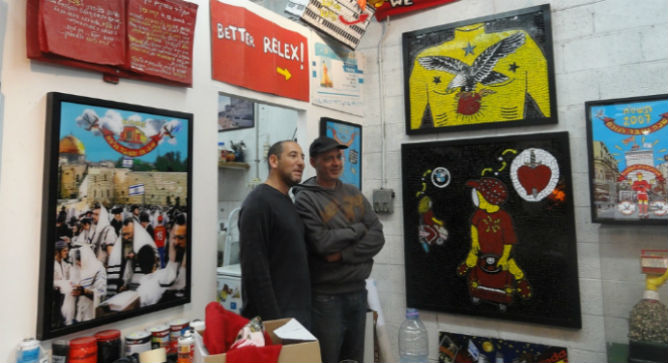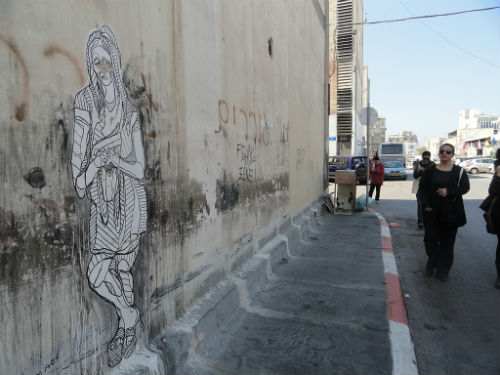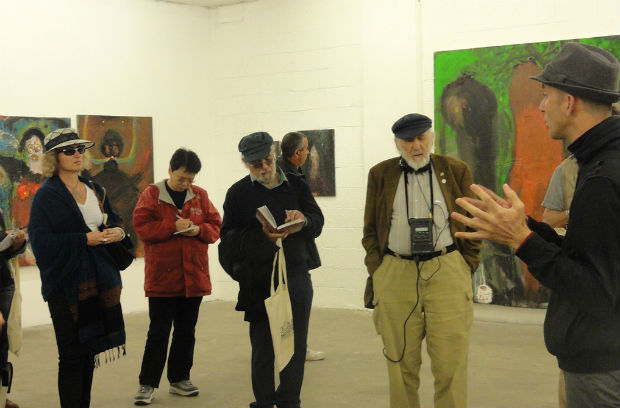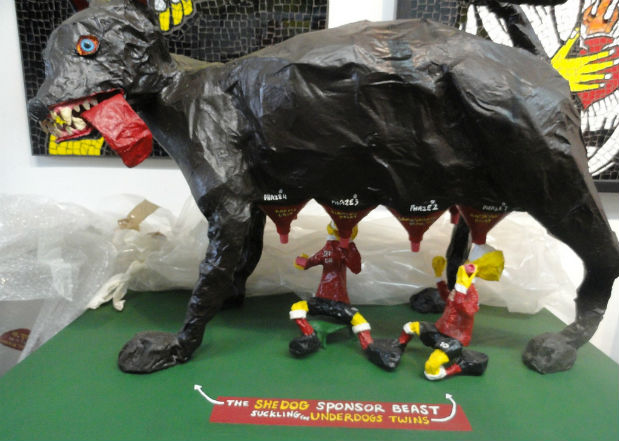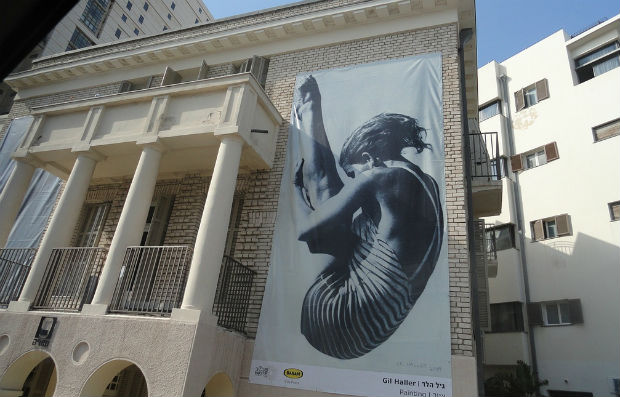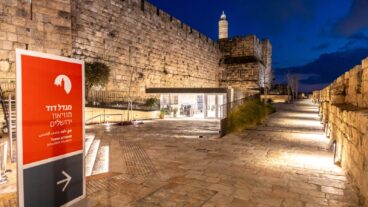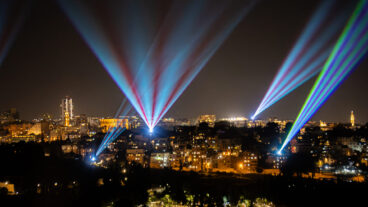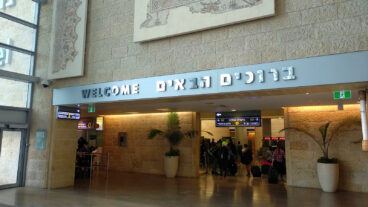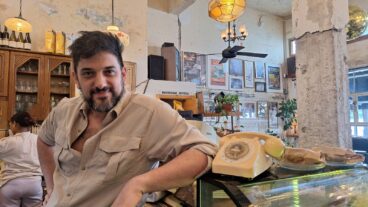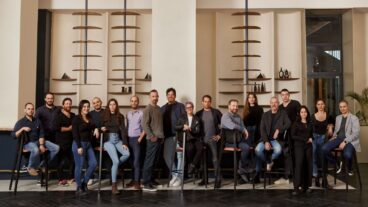Tel Aviv is recognized by the United Nations Educational, Scientific and Cultural Organization (UNESCO) as the “White City” for its unparalleled number of white 1920s-era buildings made in the Bauhaus architectural style.
But on the south end of the city, in the working-class district of Kiryat Hamelacha, the reality is gritty, gray and a bit seedy. By day, strips of factories housing small machine shops operate out of warehouses and garages. By night, prostitutes and drug addicts roam the streets.
Spread the Word
• Email this article to friends or colleagues
• Share this article on Facebook or Twitter
• Write about and link to this article on your blog
• Local relevancy? Send this article to your local press
“And it is precisely this environment,” says Yonatan Mishal, who runs CTLV, an art and culture city touring company, “where Israeli artists get their passion and inspiration for creating local and global art.”
He is taking ISRAEL21c on a brief but frenzied art tour of the district where about 30 studios house local and contemporary artists. Art spills out onto the streets and mixes and mingles with the sounds of machinery and the drum sets of young up-and-coming bands.
The tour is a prelude to Art Weekend, the opening event of Art Year in Tel Aviv. In 2012, Tel Aviv has introduced three major expansions of its best-loved cultural assets: The Herta and Paul Amir wing of the Tel Aviv Museum of Art, and the refurbished Tel Aviv Cinematheque and Habima National Theater. Art Year celebrates these new additions.
In Kiryat Hamelacha, the range of creative forces in the city is evident. “There is high art and street art here,” says Mishal. “There are drugs and prostitution, and this is the fundamental point: Art cannot be disconnected [from its environment].”
There is art hanging on gallery walls inside warehouses and painted on exterior building walls. The works of two of Israel’s first street artists, Klone and 0 cent, can be seen while walking down the streets. Some might consider these works graffiti, but they actually are part of a movement, a group of about 20 recognized street artists in Israel that includes the international exhibitor Know Hope.
Street art, Mishal points out, didn’t start in Israel until fairly recently, “when people came from other countries where there was a street art culture, as it’s known in Europe and the United States.”
A cultural shift
“One of the reasons that there was no real street art here, maybe it has something to do with Judaism,” says Mishal, “where it is forbidden to make portraits [of people].” But in time, Israeli illustrators “started looking out to the world” for ideas.
While street art in residential neighborhoods of upscale North Tel Aviv is often painted over and cleaned up, in Kiryat Hamelacha the streets are an open canvas.
Mishal walks into the studios of some of the artists in the area who are happy to provide a glimpse of their creative processes.
Yuval Caspi and Ido Shemi, two contemporary artists, share a studio but work separately in humorous ways to expose the Israeli identity and spirit, using papier-mâché sculpture, soccer slogans and mascots, mixed media, art happenings and even holograms that illustrate in layers the unusual and sometimes hypocritical society in which they live.
These two artists, a few years back, were responsible for installing a massive blow-up duck atop Tel Aviv-Jaffa City Hall to honor their hero, the late illustrator Dudu Geva.
Down a flight of stairs and around the corner, a small collective of artists shares space, and the cost of rent, to fulfill their art dreams. One is a sculptor adding metallic elements, such as bike chains, to paintings. A costume designer is making kids’ costumes, while a jewelry-maker and doll designer/illustrator work on their crafts.
Move over, Jaffa and Ein Hod
Pressured to move from the city center due to high rent, local artists have forged a small community on and around Factory Street in Kiryat Hamelacha. Mishal compares what’s happening in this Tel Aviv neighborhood to the Chelsea area in New York City.
Typically, once the scene starts percolating, higher-end galleries come in — for example, the Rosenfeld Galley run by Zaki Rosenfeld, a second-generation gallery owner. His father Eliezer started one of the first art galleries in Tel Aviv in 1952. After spending many years on Dizengoff Street dealing with conservative art, Zaki decided to move into the South Tel Aviv area and turn contemporary.
It was a bold move, but he says the offbeat location has been good for business. In the city center, his gallery was more like a museum, since most shoppers were only looking, not buying. Now his regulars, who’d book ahead anyway for viewings, have a lot more access to parking. On one wall, the paint is still wet on the canvas of a rough oil painting by Marik Lechner.
The nearby Raw Art Gallery is currently exhibiting “Showing the Tragedy in Ethical Life” by Jonathan Hirschfeld. This is difficult art for many Israelis to see, Mishal says, because of the Christian imagery, and the subject matter.
“Art is on the edge, and the real thing is happening here in the south of Tel Aviv,” he says.




